Why did people travel on the Silk Road
Post Time:2019-12-23 Views:
With its origins in the Han dynasty, the silk road was a series of trade routes that extended from China, across Central Asia, to as far as Europe. Historically, the Silk Road was a key link between China and the West. Stretching from Chang'an (Xi'an) to Dunhuang, through Xinjiang into Europe.
Since Chinese President Xi Jinping put forward the initiative to build the Belt and Road in 2013, the reputation of the silk road travel has become more and more popular in the world. Compiled below are some reasons why you should travel on the silk road in case you’re in doubt.
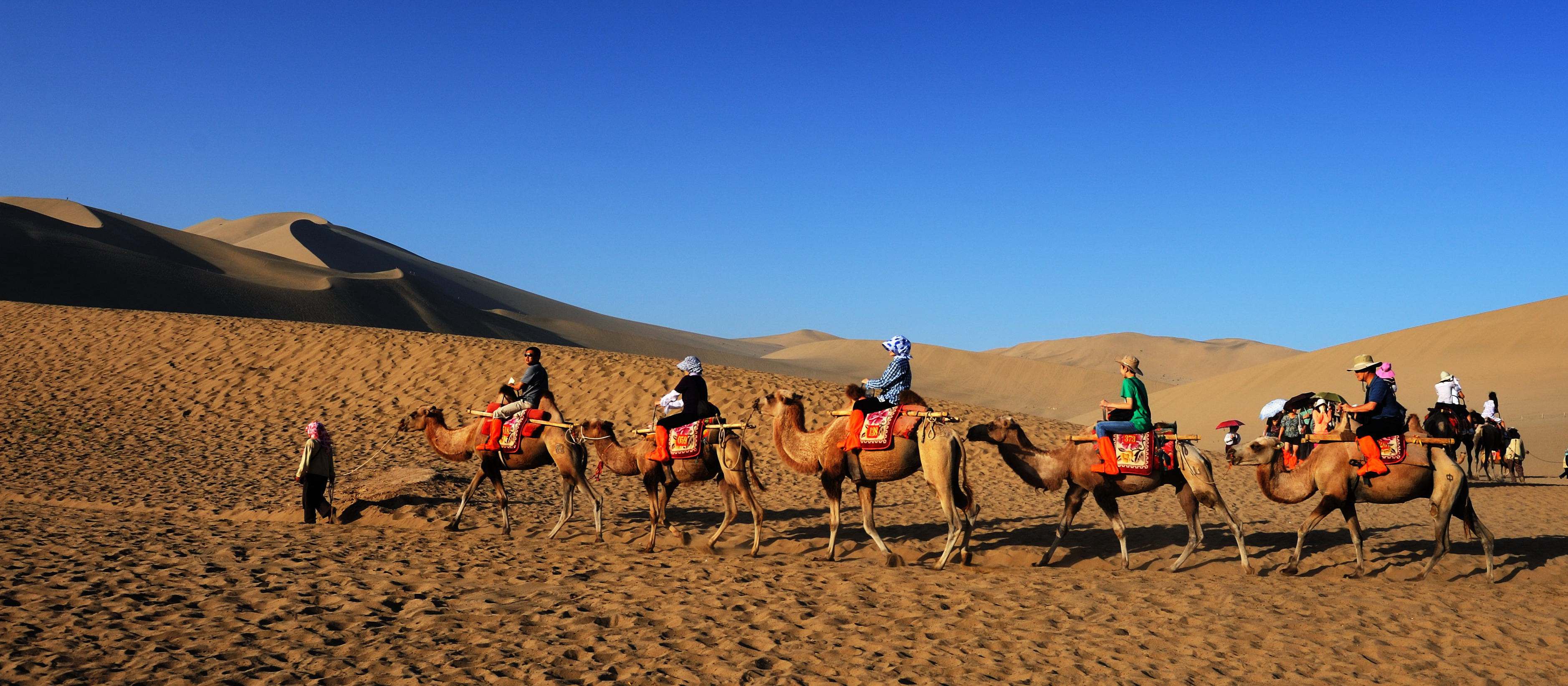
Why take the Silk Road Tour?
Don’t just sit there and follow the bandwagon. If you have the means you should come and witness for yourself.
There are many beautiful natural views and historical sites along the silk road and it's time to pick a destination and start packing! With the rapid development of China, a huge number of people are showing interest in " Silk Road Tours" to enjoy their holiday in a more flexible and fun way.
China offers plenty of wonderful scenic areas along the silk road. Here, I would like to recommend some famous places that will feast your eyes.
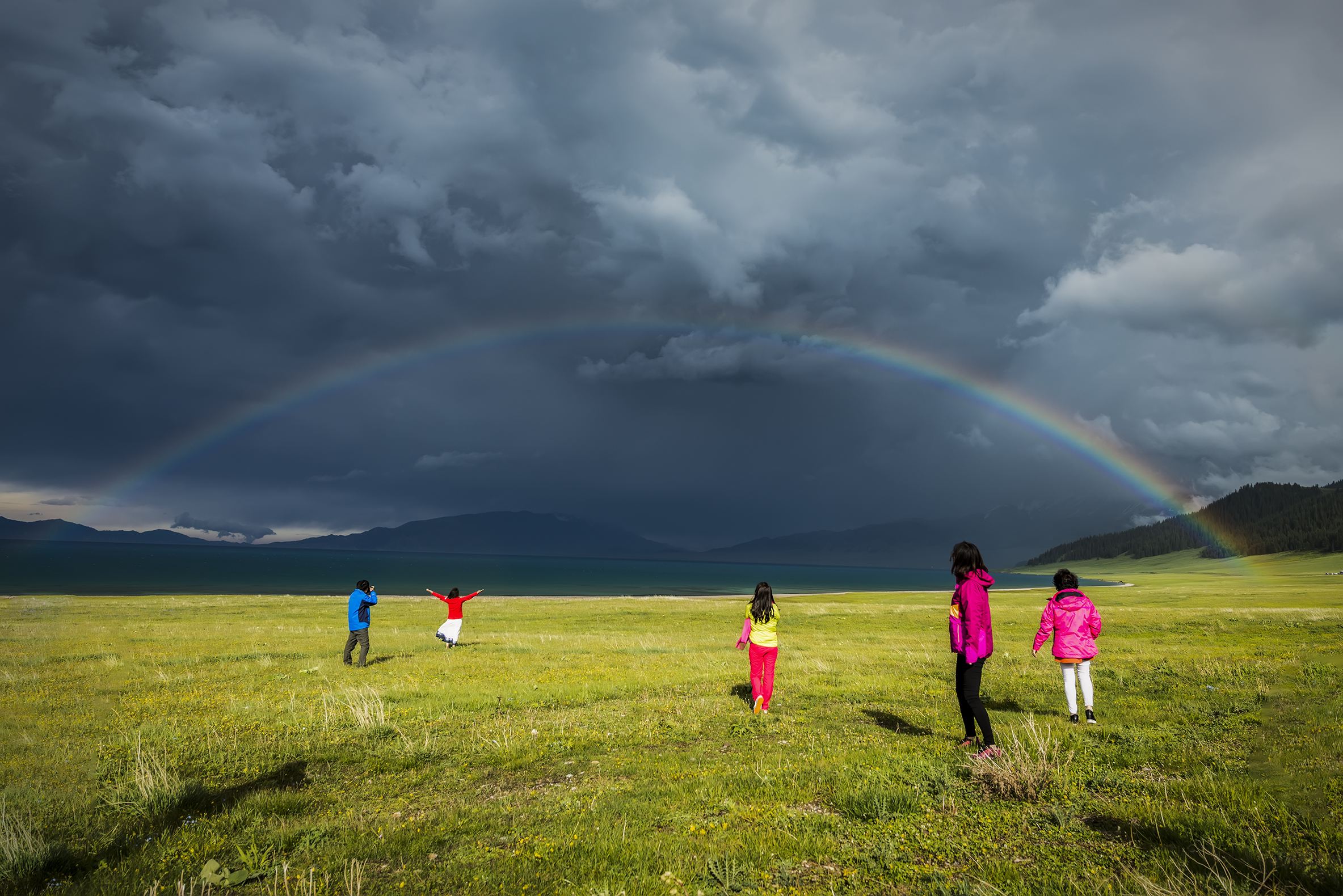
What to visit along silk road?
Visiting China along the silk road should be among the ticked places on your to-do list. China is an adventurer’s wonderland. Forget the Great Wall, enter deep into the hinterlands. Visitors will be marvelled at the sheer number of grottoes and scenery in China. Even locals have a hard time choosing where to visit on holidays.
The point is all these scenic areas have stunning attractions with unimaginable grottoes and natural views that you can’t find anywhere except in China. Top on the list are Luoyang, Xi'an, Dunhuang, Zhangye and Xinjiang. However, some travel destinations in Xinjiang are relatively unknown to expats living in China because of the remoteness of the regions, such as Turpan and Kanas etc.
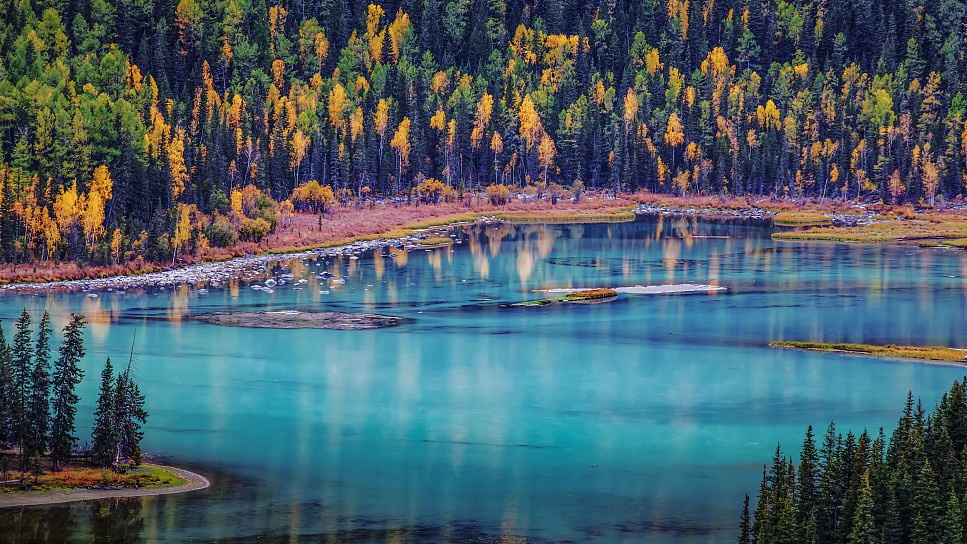
Longmen Grottoes:
Listed as a UNESCO World Heritage Site, the Longmen Grottoes represent the high point of Chinese stone carving and will blow your mind. It is home to more than 2,300 caves and niches that were delicately carved into the limestone cliffs of over one kilometre long.
There are around 110,000 Buddhist stone statues and more than 2,800 inscriptions carved on the stones, as well as plenty of historical materials regarding religion, art, calligraphy, architecture and more.
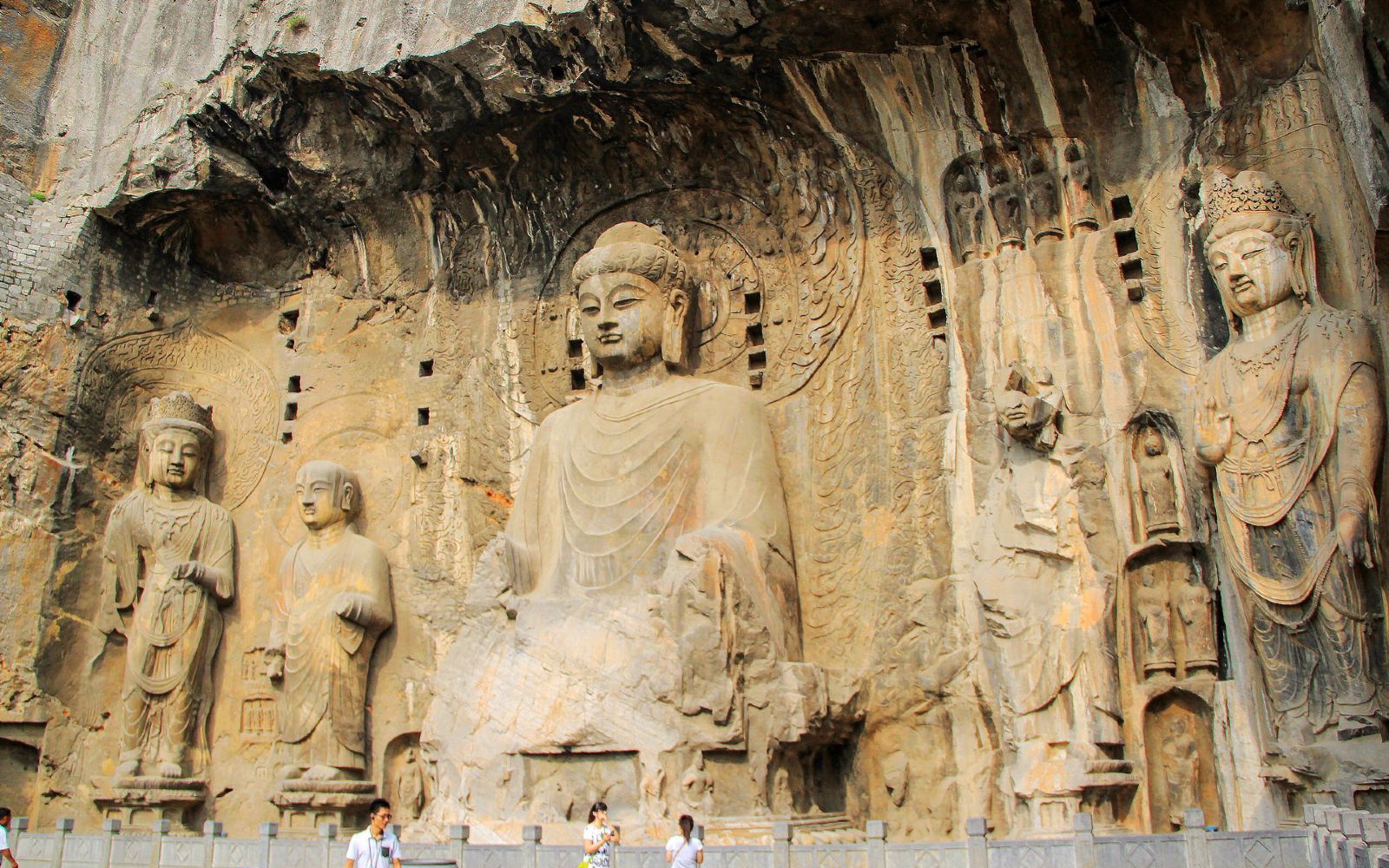
Ancient cities connected along the Silk Road Xi'an:
Chang'an was one of the most important ancient imperial capitals and cities in Chinese history and was located close to today's Xi'an, in Shaanxi Province. As the starting point of the Silk Road, it was an industrial and commercial hub of the nation for millennia and acted as a key crossroads for people of various cultural backgrounds, ethnic identities and religious beliefs from regions throughout Asia and the Middle East.
The ancient city featured two bustling business and trade districts - the East Market and the West Market - both thriving centres of commerce in Chang'an during the Tang Dynasty. The West Market, which was dedicated to trade in foreign and exotic merchandise, attracted a great number of international customers and merchants, bringing together people from Central Asia, Persia, Arabia, South Asia, Korea and Japan.
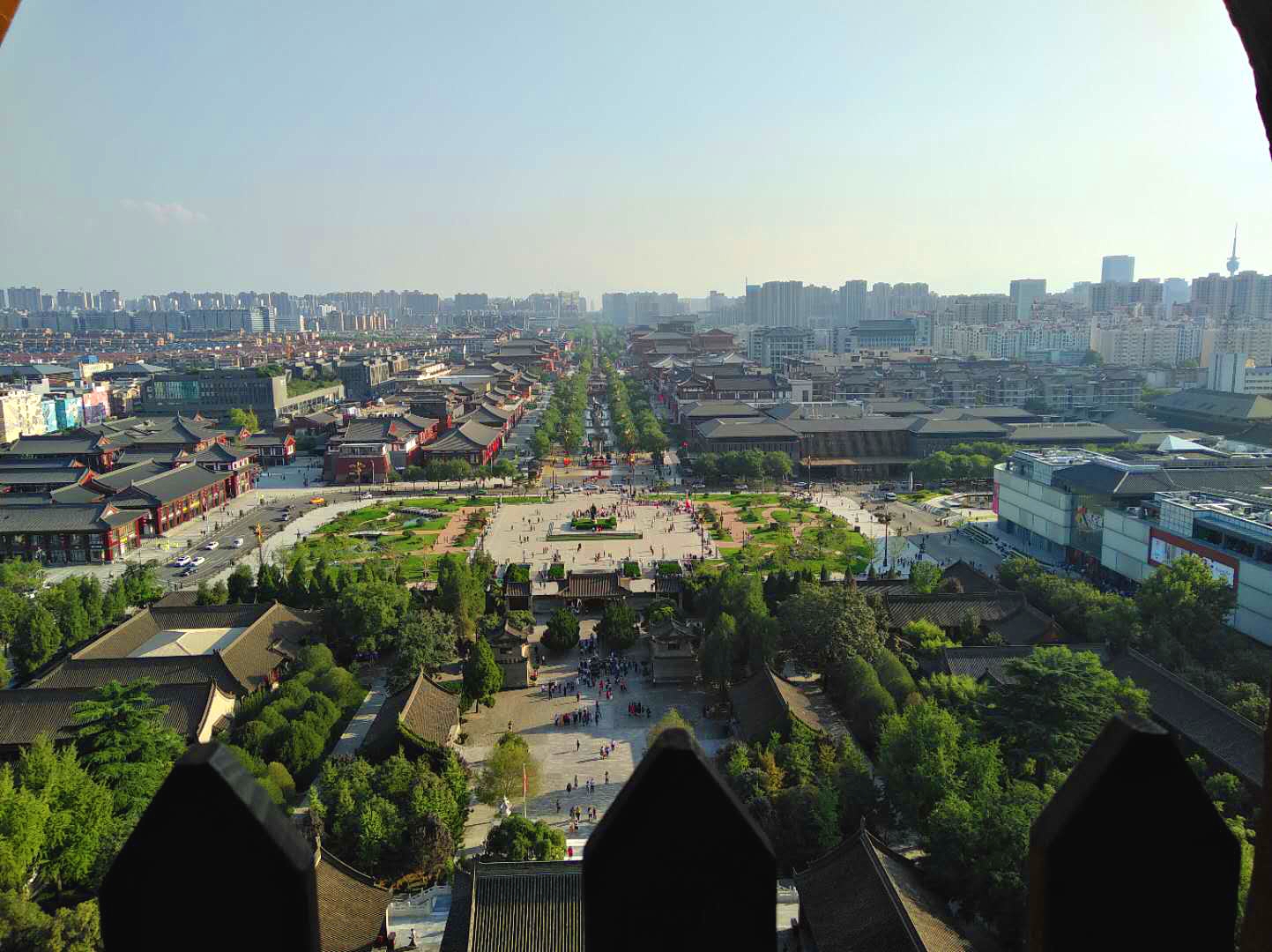
Muslim Quarter:
The Muslim Quarter is the first place you can sense the city of Xi'an. This old city not only was the origin of the ancient Silk Road but also witnessed the gradual fusion of western and eastern culture and philosophy. Now, the Belt and Road Initiative will extend that diversity.
Tourists from all over the world visit Xi'an for many reasons. There is no doubt that the Muslim Quarter is on their "must-go" travel list here. The Muslim Quarter has survived many dynastic changes and thrived with well-preserved traditions. The local Muslim population has left its influence on the cuisine at the main food street as well. Therefore, if anyone likes exotic food, this street will be the best choice.
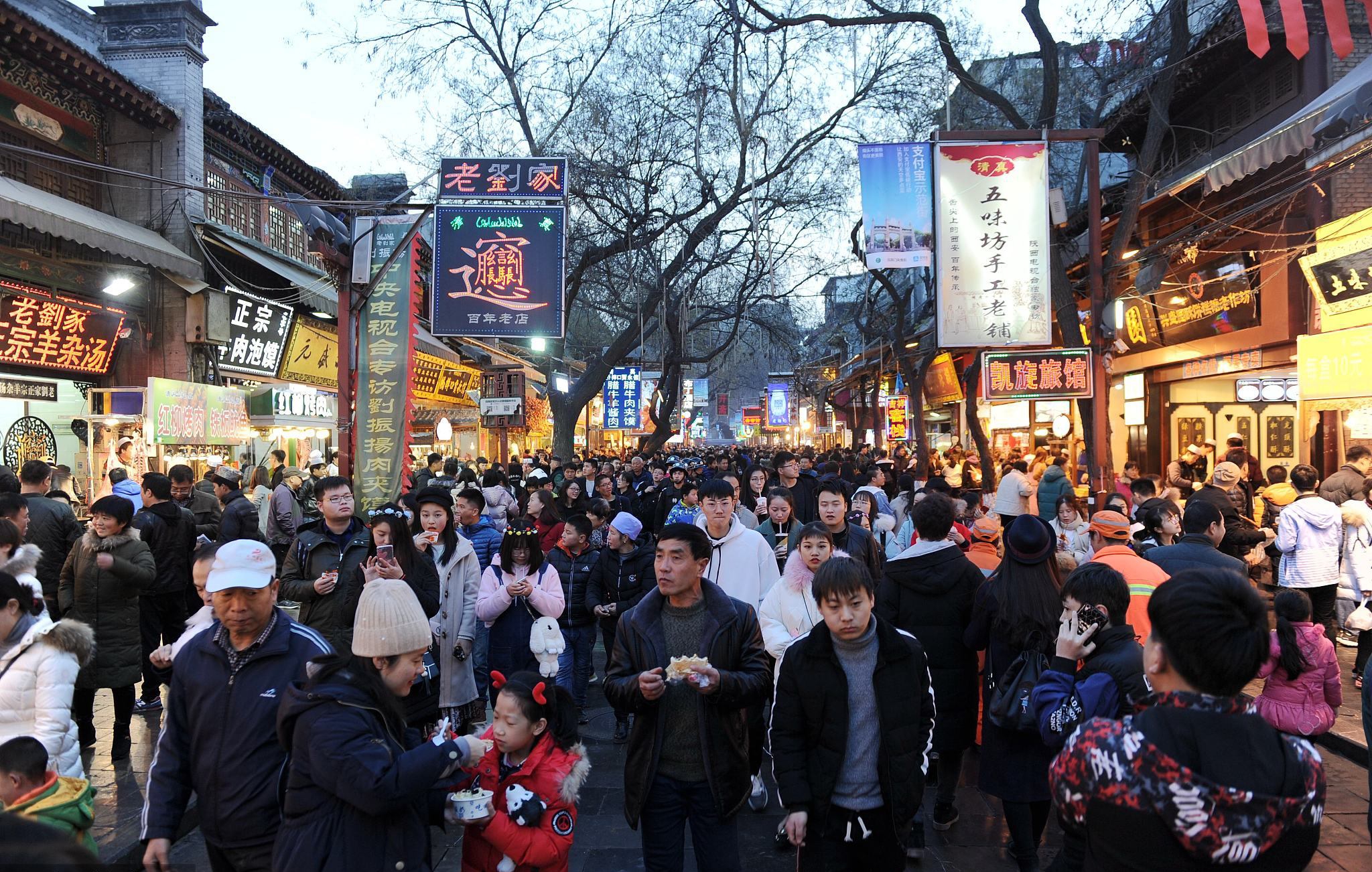
Terracotta Warriors:
The diverse heritage in Xi'an is supreme, particularly with the highlight of Terracotta warriors and horses, a collection of more than 7,000 life-sized terracotta sculptures serving as a protection for the tomb of Qin Shi Huang (the first emperor who unified the country). Historical records reveal that it took over 700,000 people's some 30 years to complete.
Soldier figures are varied in facial expressions, clothing, hairstyles and gestures; so are their horses, chariots and weapons. These masterpieces have provided abundant detailed evidence for the study of the history of military, culture, art, and economics of the Qin Dynasty (221-206 B.C.).
Considered as one of the greatest discoveries of the 20th century, these delicately crafted and painted models have delighted millions of visitors both at home and abroad.
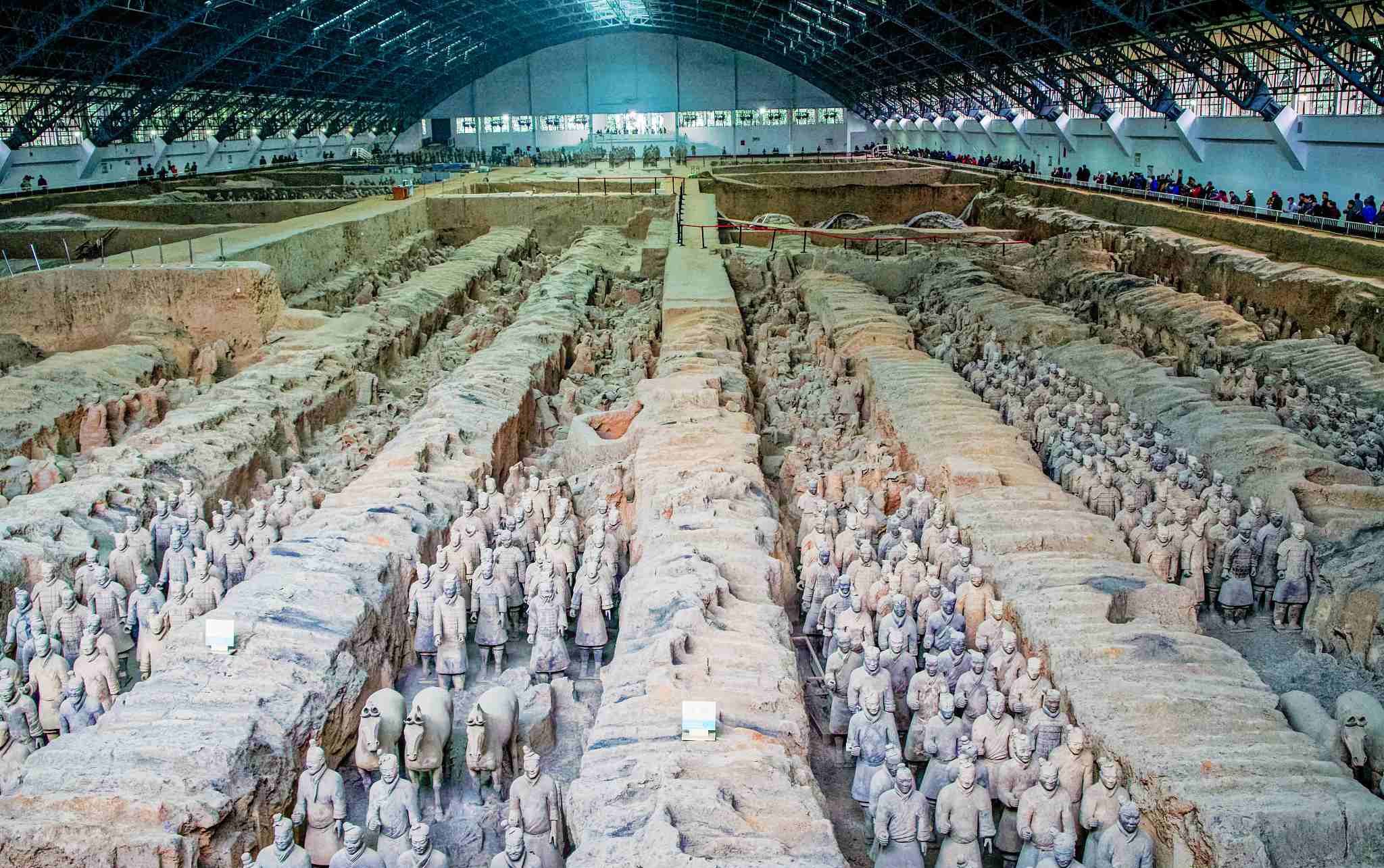
Ancient City Wall:
The natives always say the journey to Xi'an is not complete without visiting the Ancient City Wall, which has been stretched round to guard the inner city since the 13th century. Even nowadays, the massive, ancient City Wall is still strong and solid. It is the best-preserved city wall in China, and also one of the oldest intact military fortifications in the world.
Xi'an City Wall stretches almost 14 kilometres (8.7 miles) in length. The best way to see the entire wall might be cycling. Rental bikes are available around. If you are at a leisurely pace, biking the entirety takes approximately 1.5 to 2 hours. Keep your eyes open for the spectacular gates, ramparts, and a deep moat surrounding the wall.
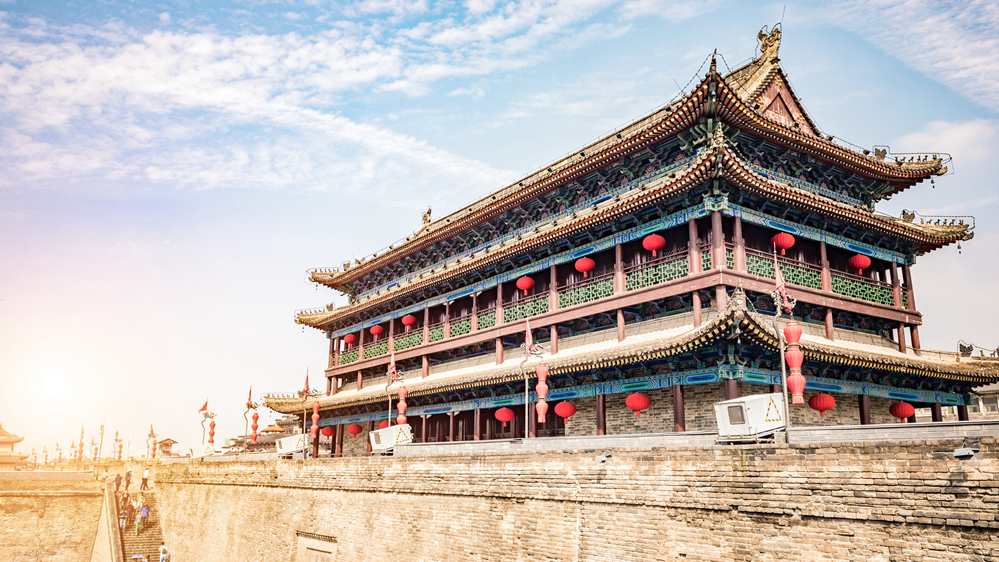
Tips:
Every March to May and September to November is the best time to travel to Xi'an. If you're interested in a lingering longer, read this post: How to perfect your 72-hour visa-free stay in Xi'an.
Zhangye:
In Chines history, Zhangye City is part of the Hexi Corridor, which is an important route for connecting China to the Western world in Gansu Province via the Silk Road.
Zhangye Danxia landform that can be found in Zhangye National Geopark. Located at Zhangye City, northwest China's Gansu Province, the hills cover an area of 322 square kilometres. From the sky, the vast land is covered with red cliffs in different shapes and rainbow ridges in multiple colours.
The rainbow is a common natural phenomenon, but people still fancy it because it vanishes quickly.
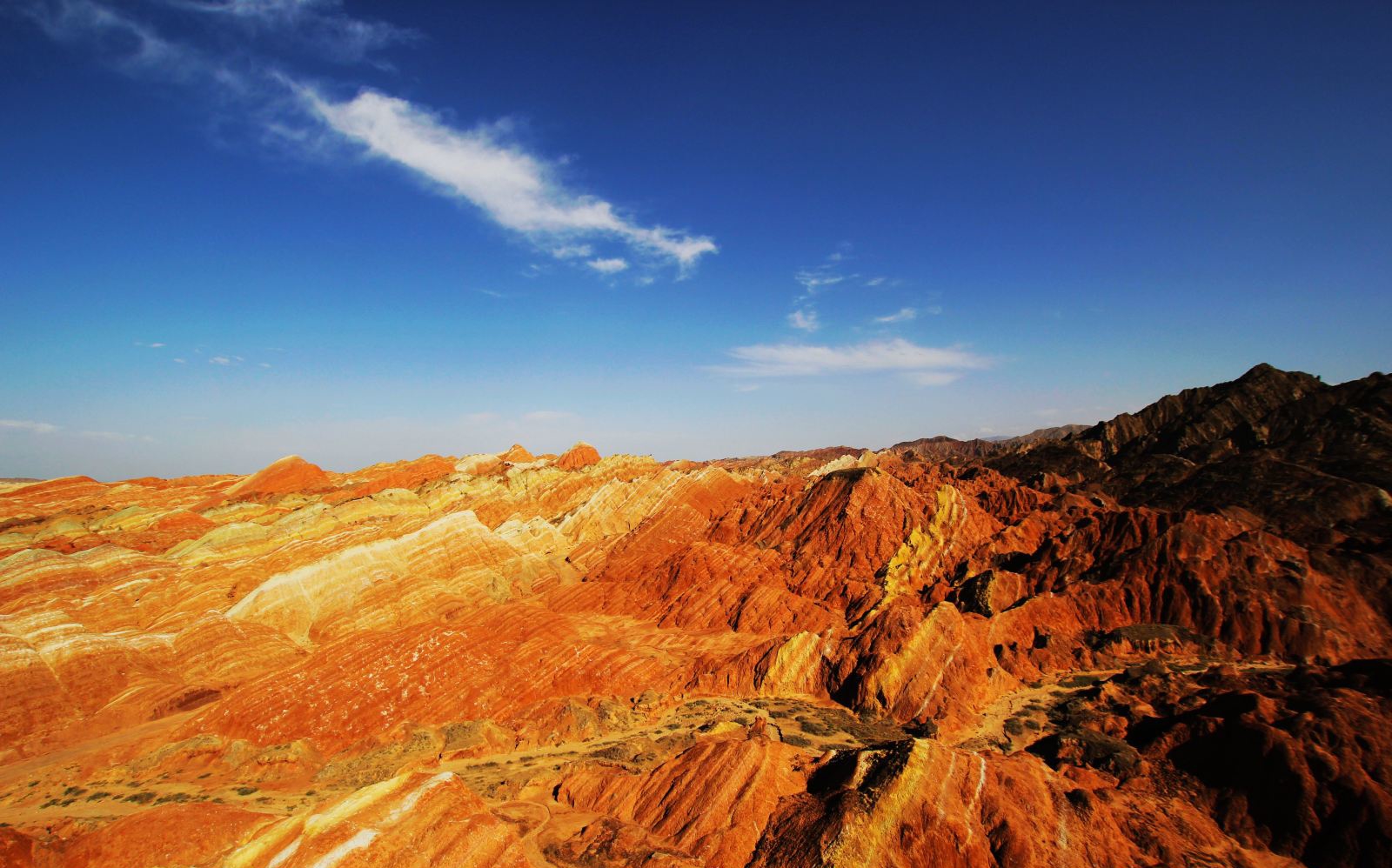
When is the best time to visit?
Marco Polo spent a year here around 1274 and wrote in his book "The Travels of Marco Polo" that this region was an international trade market. Nowadays, it has turned into a tourism city that attracts many people. June and July each year are the best months to visit Zhangye National Geopark. During the rainy season, the water can cool you from the summer heat and add moisture to the air.
It is best to visit in the morning and at dusk, especially at sunset, when the colours change continuously, showing yellow and red layers covered by a light grey layer.
Approximate sunset time: 7:30 pm in spring and autumn; 8:00 pm in summer.
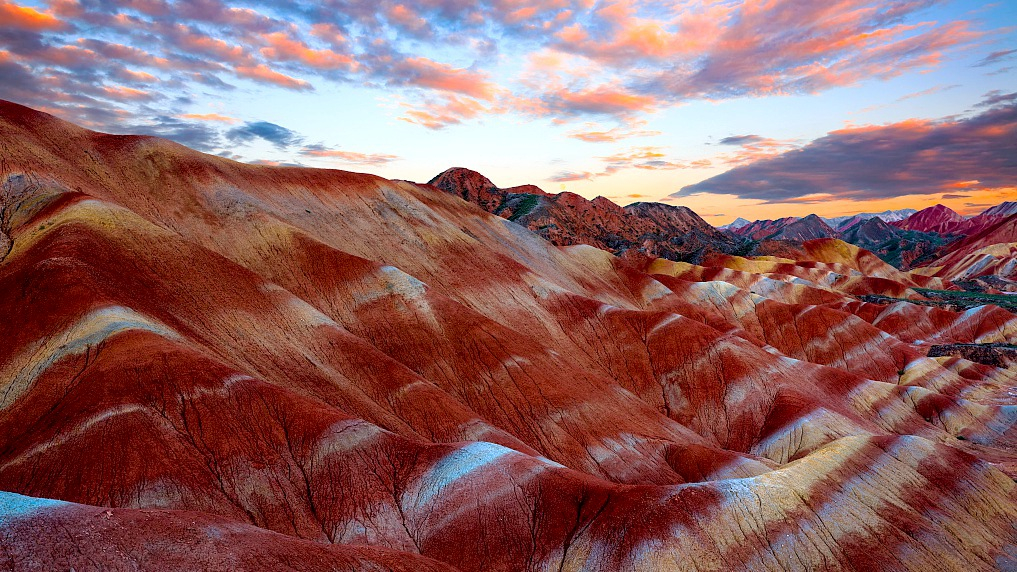
Dunhuang:
Set on the edge of the Silk Road, Dunhuang may seem like an unlikely place to find an oasis of Buddhist art. With towering dunes in the background, the caves here reflect the power of divine inspiration.
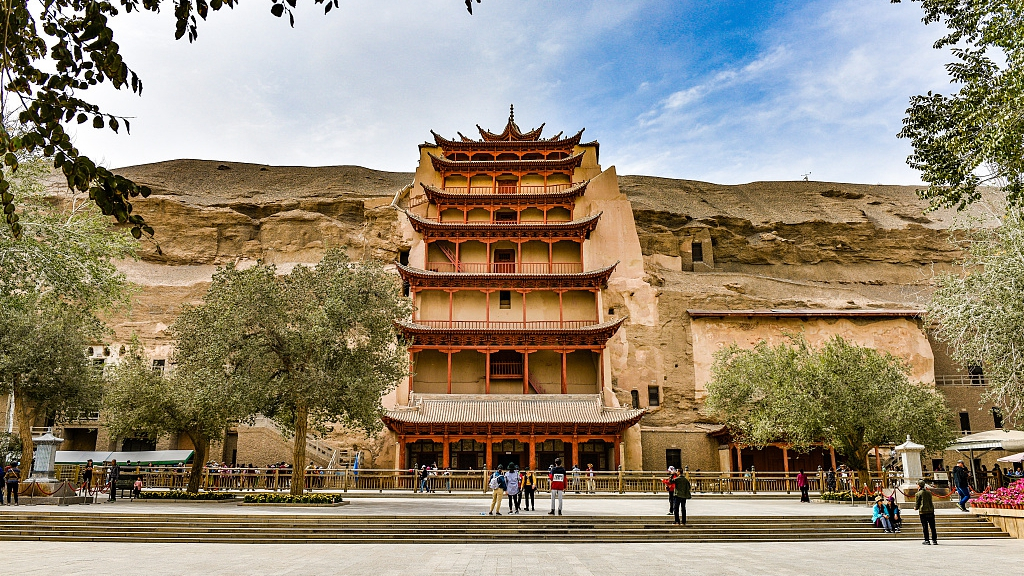
Mingsha Mountain and Crescent Moon Spring:
Six kilometres south of Dunhuang at Singing Sands Dune, the desert meets the oasis in the most spectacular view. From the sheer scale of the dunes, it's easy to see how Dunhuang gained its name "Town of Sand". In the same area is the Shallow Spring fed Crescent Moon Lake, which forms an oasis at the desert's edge. A peculiar natural phenomenon occurs when standing on top of the dune. If it's a windless day, a sound similar to a flute can be heard, but if many people are descending the dune at once it becomes a thunderclap.
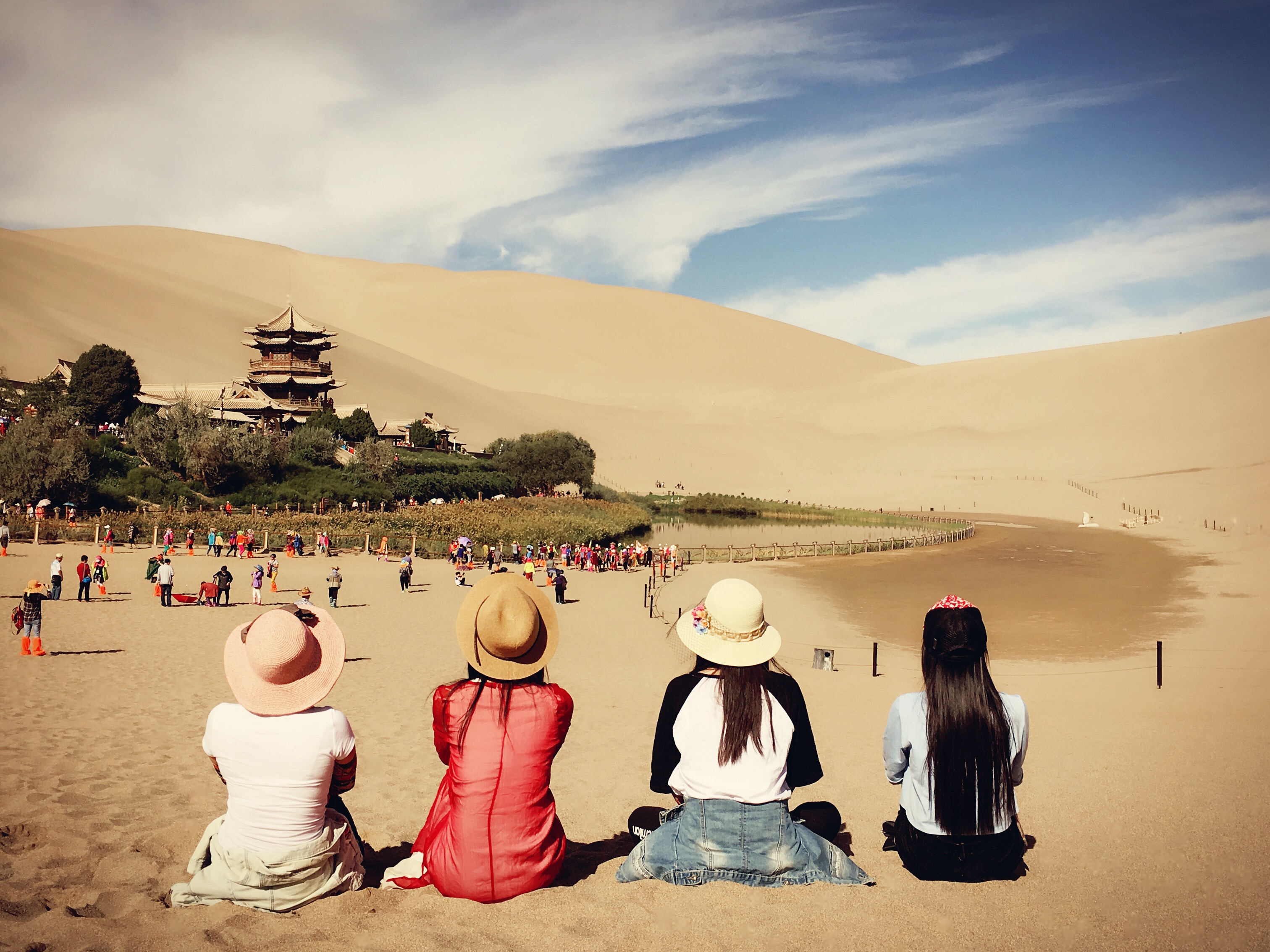
Best time to Dunhuang:
Every April to October is the best time to travel to Dunhuang. In summer, the sun is quite strong so sunscreen or sunscreen products are quite essential.
In winter it’s very cold so tourists are suggested to take plenty of warm clothes.
Turpan:
As the Silk Road trading post in ancient times, the Tupan oasis is surrounded by desert, mountains, ruined cities and Thousand Buddha Caves.
Riding in the Flaming Mountains, it will be a great opportunity to take pictures. Made famous by the ancient Chinese classic novel Journey to the West, the surfaces of these desiccated mountains have been whipped into the shape of flames by howling desert winds. Under the relentless heat of the midday sun, the mountains radiate heat and with a dash of imagination, may appear to be on fire.
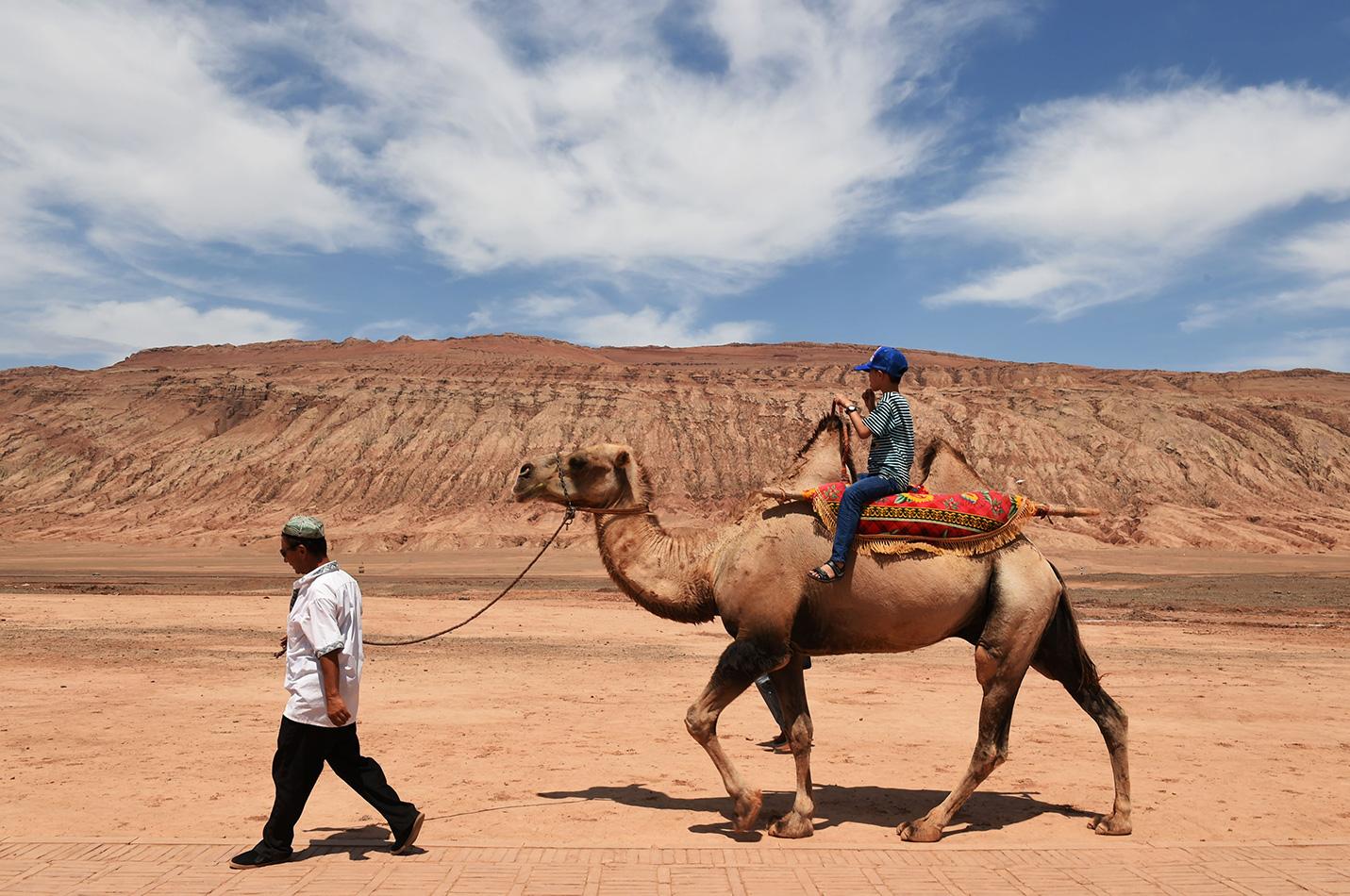
Karez Irrigation Site:
One of the most interesting stops on the tour is a Karez Irrigation Site. It's the site the locals are most proud of, and rightfully so-the irrigation method is probably their greatest contribution to desert dwellers and has been employed as far away as Afghanistan and Iran. More than 2,000 years ago, it was developed as a way to bring the snowmelt waters of the Tian Shan to the city through a series of wells dug into underground water channels. By transporting the water underground, they were able to prevent evaporation and to keep dust and dirt out of their water supply. The Karez Irrigation Site is like a museum explaining how the wells are built and maintained and even includes a sample channel and well that you can explore.
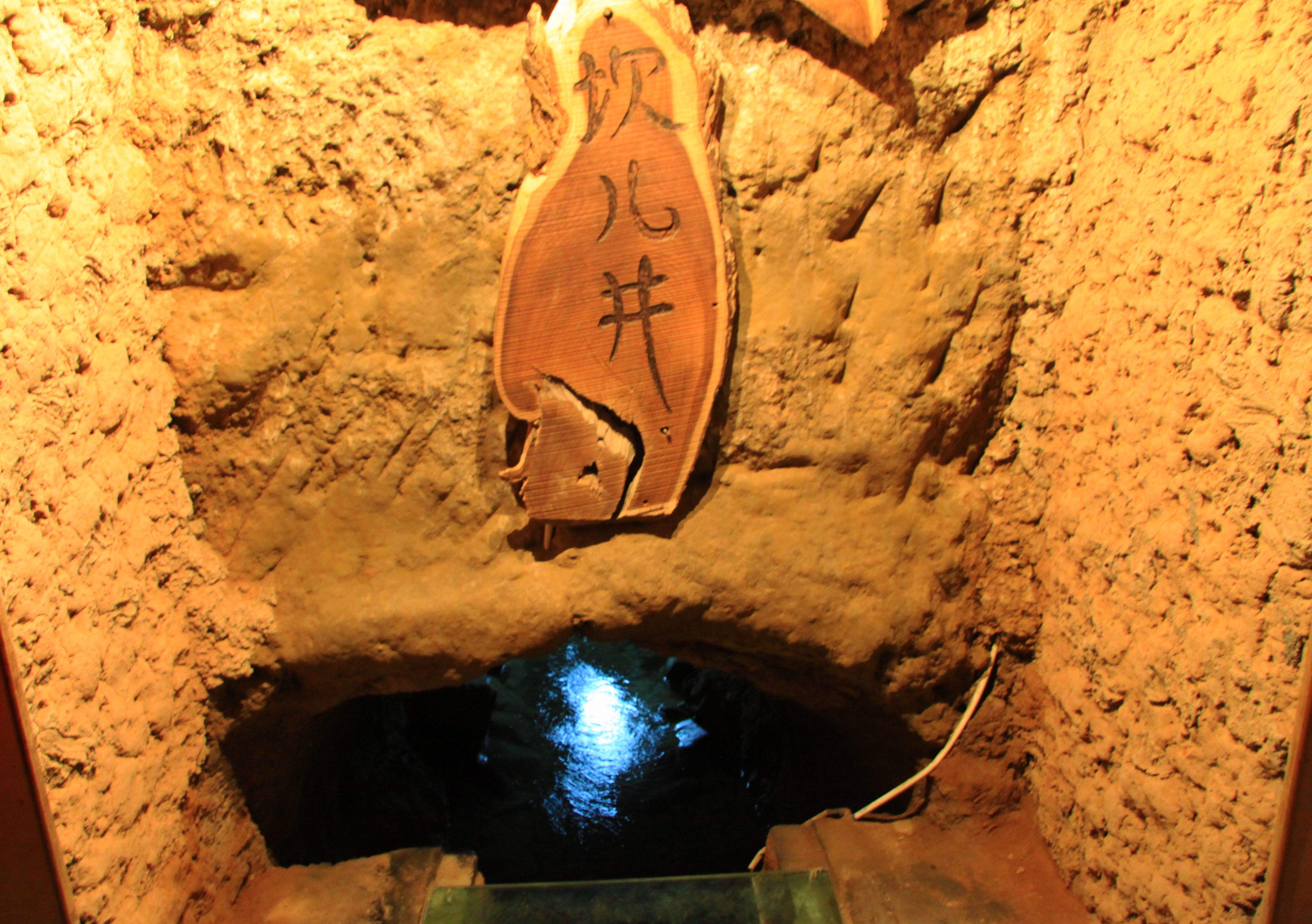
Jiaohe Ruins:
The Jiaohe Ruins was built during the Han dynasty as a Chinese garrison town to defend the borderlands, it's less romantic but better preserved than Gaochang. Although the town was razed by Genghis Khan and his Mongol army, many structures maintain some semblance of their original form. Roads lead clearly through the town and a monastery with statues of the Buddha still stands. The town was built on an island at the confluence of two rivers. As the tours usually stop here in the late afternoon, the sunlight turns the stone almost golden and shutterbugs can have a field day.
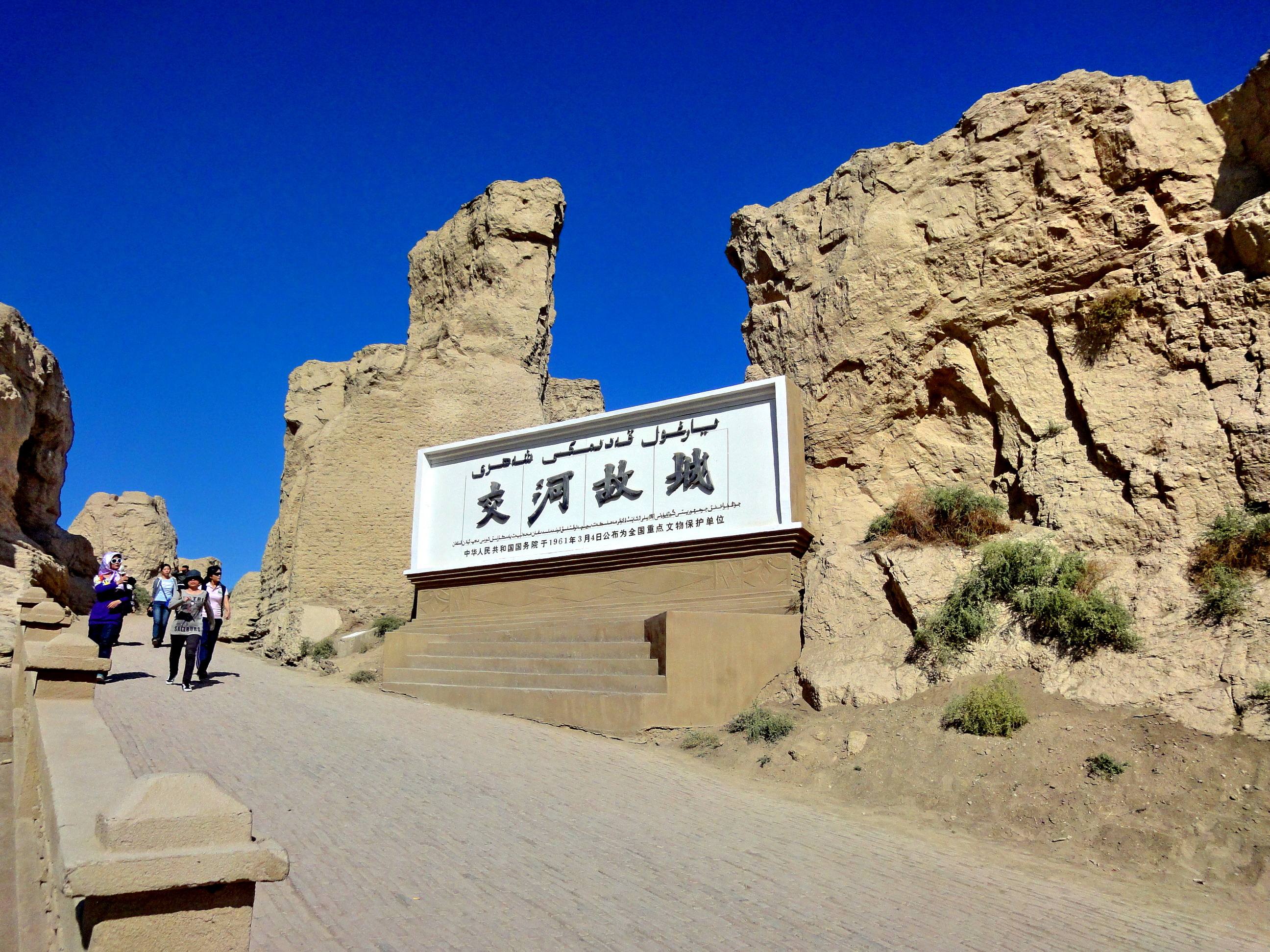
Best time to Turpan:
Though summer is blisteringly hot with temperatures going up to 48 degree Celsius, it's also the peak travel time and when the town moves into full swing to cater to tourists. Though spring may be cooler, there are often sandstorms that are much harder to deal with than the heat. Autumn is probably the ideal time to be here through the winter can come on fast, bringing with it the biting cold of the desert.
Every August 25 there's the annual Silk Road Turpan Grape Festival at the Turpan Travel and Culture Square.
Urumqi:
As the provincial city of the Xinjiang Uygur Autonomous Region, Urumqi has become a new metropolis in northwest China over the last few years.
The International Bazaar is a good place to end our journey. It covers a huge commercial complex with a local food plaza, shopping plaza, ethnic handicraft stores, exhibitions, an outdoor performance square, and mosques. It is the largest Bazaar in China and the landmark tourist attraction in Urumqi.
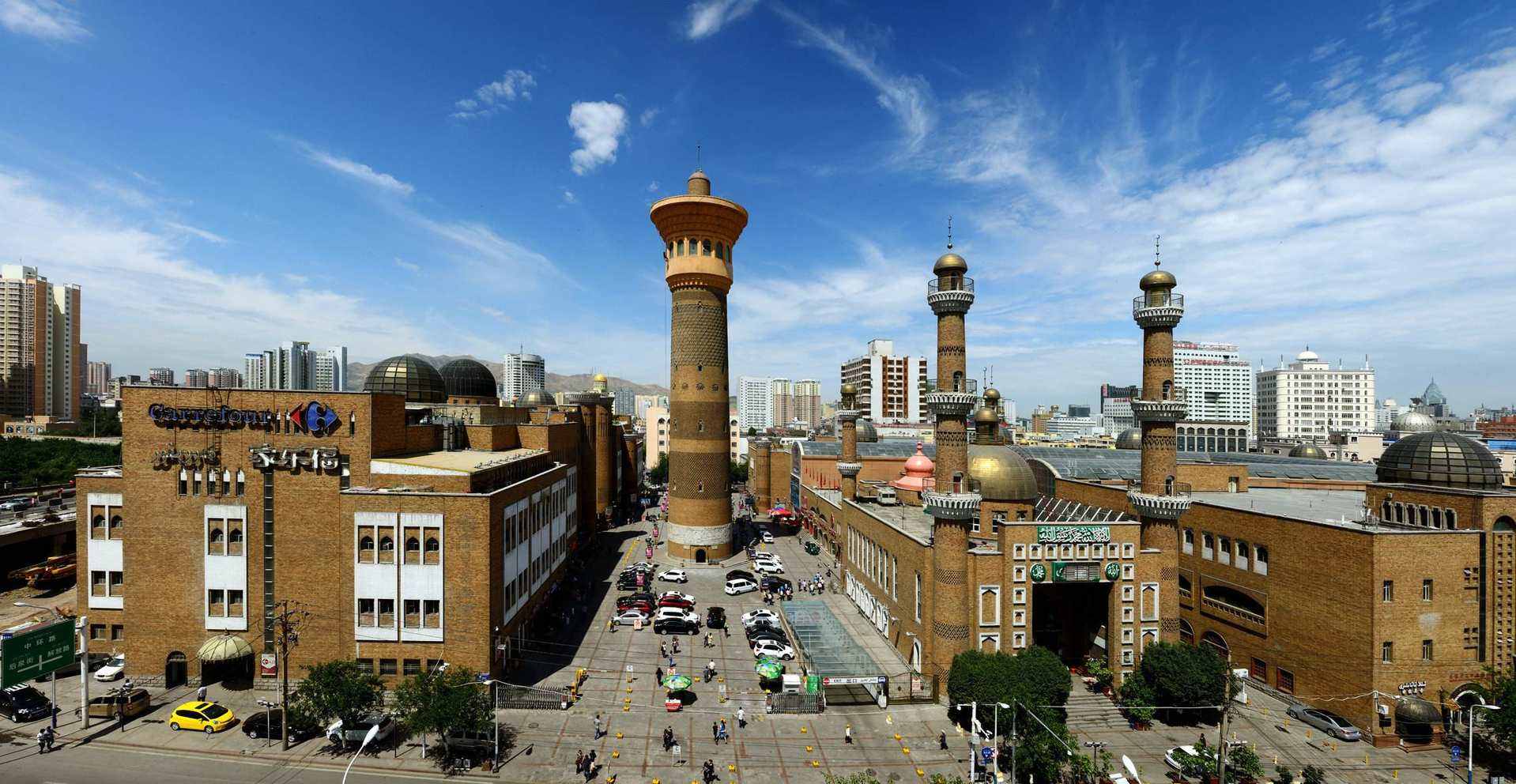
Recommended Silk Road Tours:
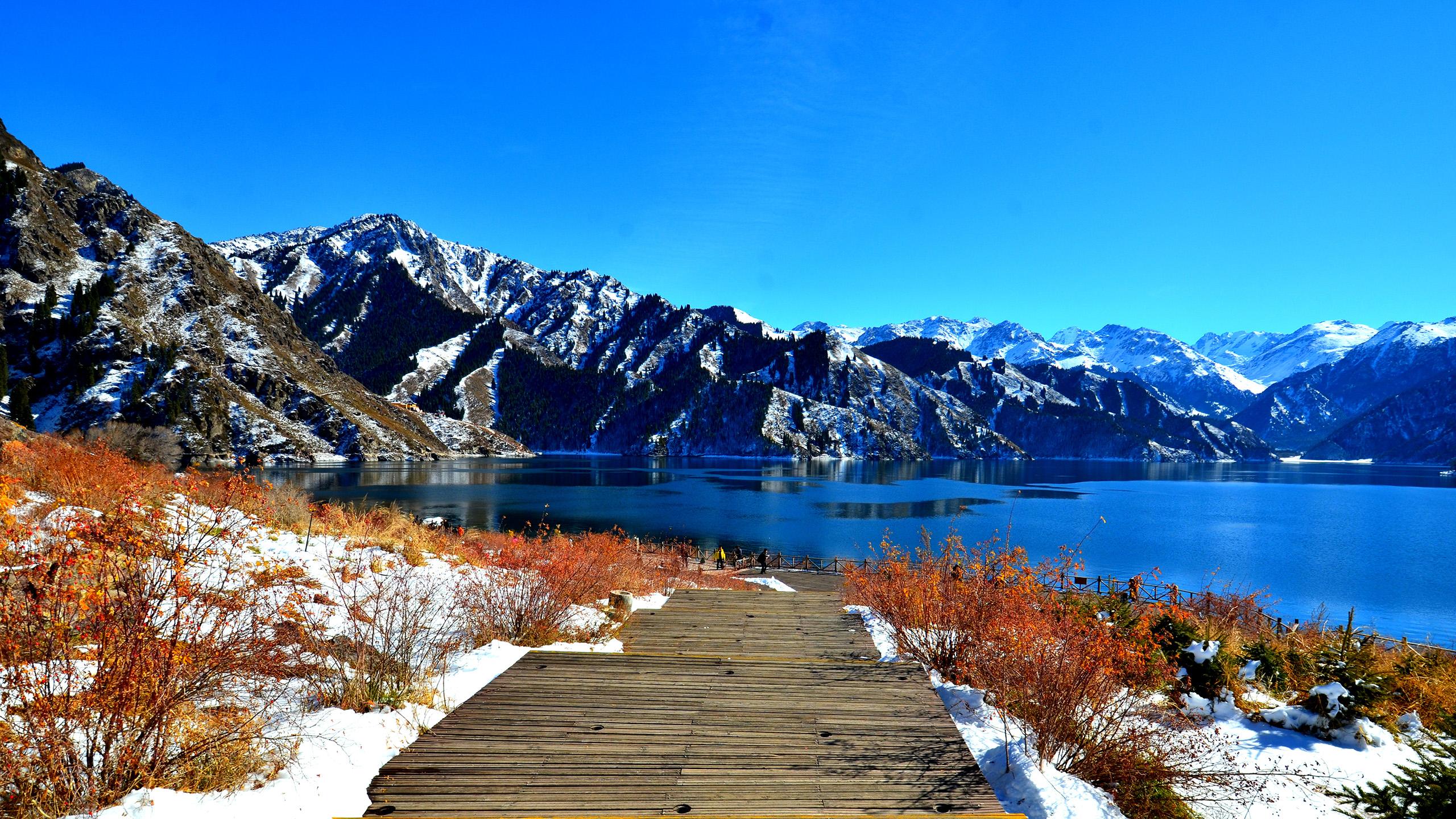 14 Days Xinjiang Picture Landscape with Ethnic Flavour Tour
14 Days Xinjiang Picture Landscape with Ethnic Flavour Tour 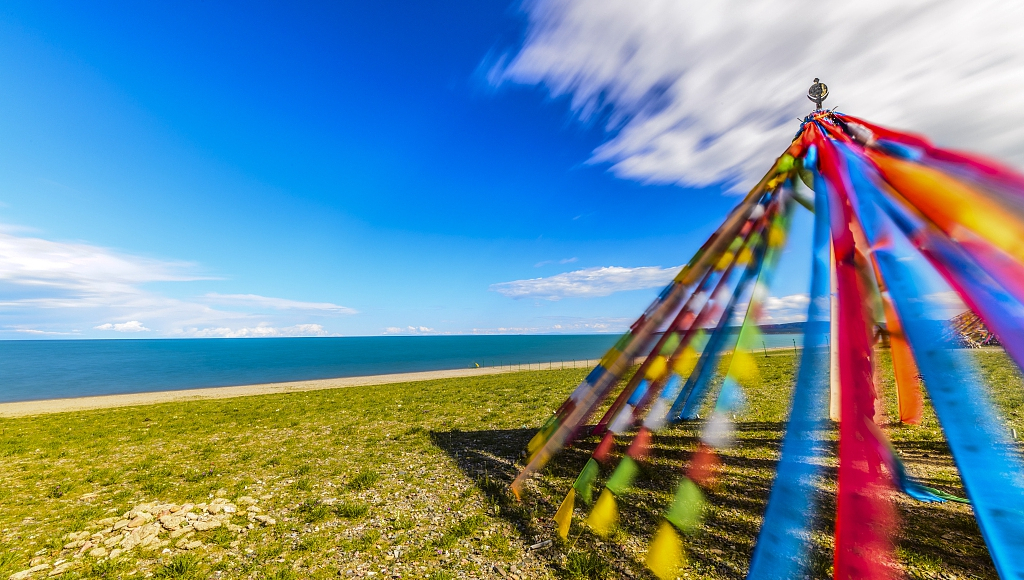 West China Travel to Qinghai and Gansu
West China Travel to Qinghai and Gansu
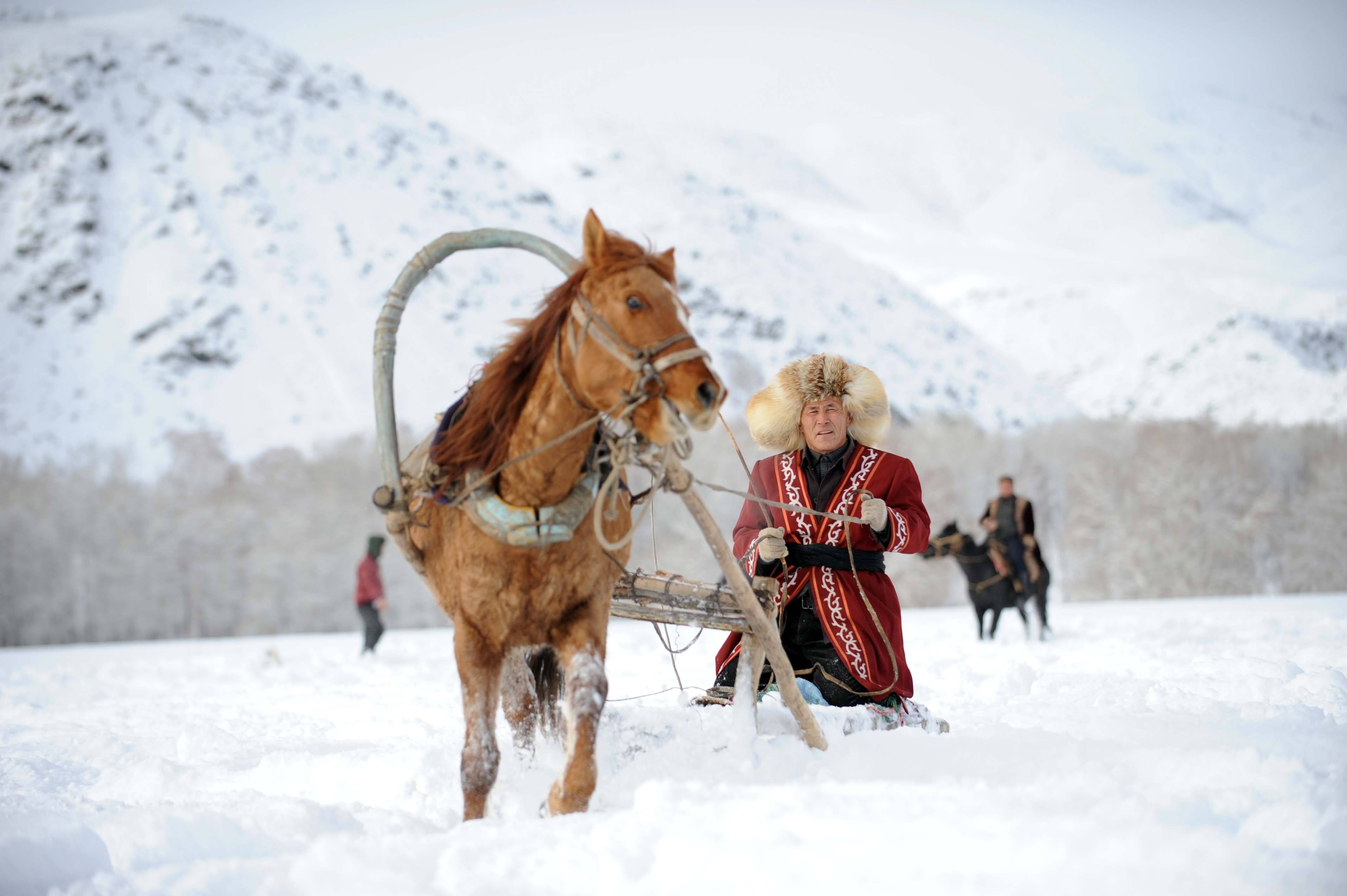 12 Days Silk Road Travel to Qinghai-Gansu and Xinjiang
12 Days Silk Road Travel to Qinghai-Gansu and Xinjiang 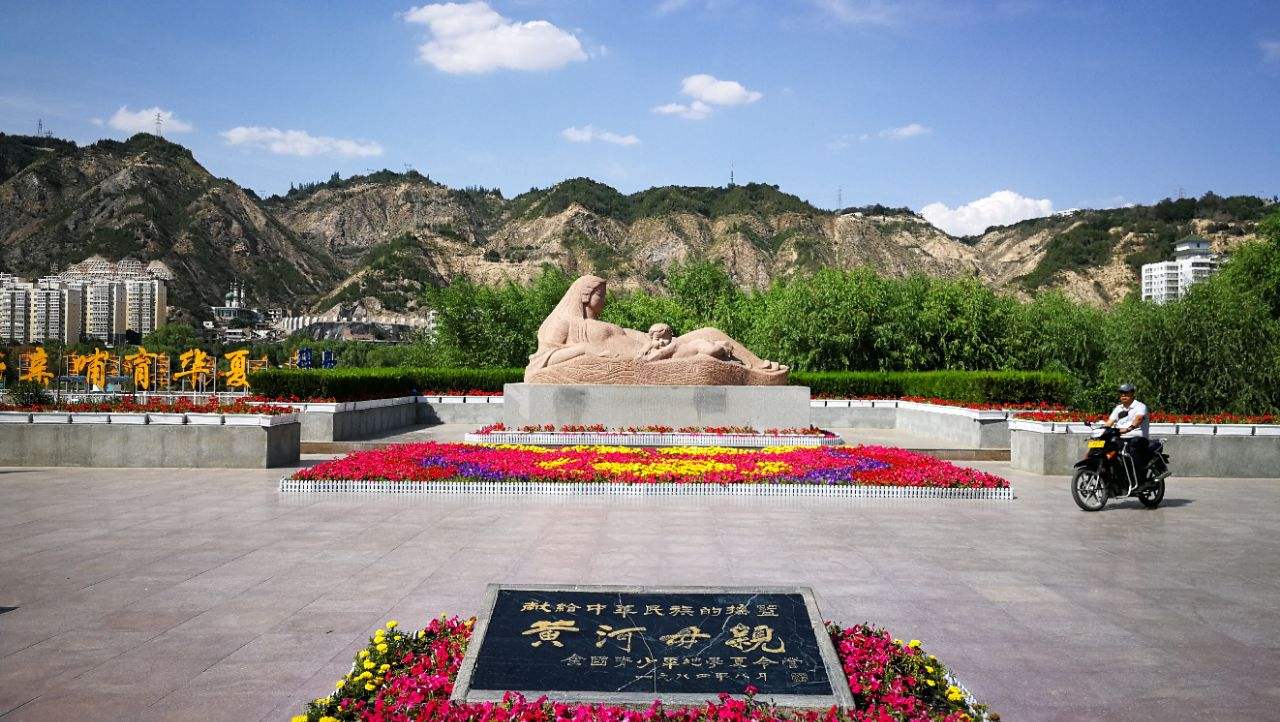 Silk Road Travel from Malaysia by Airasia
Silk Road Travel from Malaysia by Airasia
Since Chinese President Xi Jinping put forward the initiative to build the Belt and Road in 2013, the reputation of the silk road travel has become more and more popular in the world. Compiled below are some reasons why you should travel on the silk road in case you’re in doubt.

Why take the Silk Road Tour?
Don’t just sit there and follow the bandwagon. If you have the means you should come and witness for yourself.
There are many beautiful natural views and historical sites along the silk road and it's time to pick a destination and start packing! With the rapid development of China, a huge number of people are showing interest in " Silk Road Tours" to enjoy their holiday in a more flexible and fun way.
China offers plenty of wonderful scenic areas along the silk road. Here, I would like to recommend some famous places that will feast your eyes.

What to visit along silk road?
Visiting China along the silk road should be among the ticked places on your to-do list. China is an adventurer’s wonderland. Forget the Great Wall, enter deep into the hinterlands. Visitors will be marvelled at the sheer number of grottoes and scenery in China. Even locals have a hard time choosing where to visit on holidays.
The point is all these scenic areas have stunning attractions with unimaginable grottoes and natural views that you can’t find anywhere except in China. Top on the list are Luoyang, Xi'an, Dunhuang, Zhangye and Xinjiang. However, some travel destinations in Xinjiang are relatively unknown to expats living in China because of the remoteness of the regions, such as Turpan and Kanas etc.

Longmen Grottoes:
Listed as a UNESCO World Heritage Site, the Longmen Grottoes represent the high point of Chinese stone carving and will blow your mind. It is home to more than 2,300 caves and niches that were delicately carved into the limestone cliffs of over one kilometre long.
There are around 110,000 Buddhist stone statues and more than 2,800 inscriptions carved on the stones, as well as plenty of historical materials regarding religion, art, calligraphy, architecture and more.

Ancient cities connected along the Silk Road Xi'an:
Chang'an was one of the most important ancient imperial capitals and cities in Chinese history and was located close to today's Xi'an, in Shaanxi Province. As the starting point of the Silk Road, it was an industrial and commercial hub of the nation for millennia and acted as a key crossroads for people of various cultural backgrounds, ethnic identities and religious beliefs from regions throughout Asia and the Middle East.
The ancient city featured two bustling business and trade districts - the East Market and the West Market - both thriving centres of commerce in Chang'an during the Tang Dynasty. The West Market, which was dedicated to trade in foreign and exotic merchandise, attracted a great number of international customers and merchants, bringing together people from Central Asia, Persia, Arabia, South Asia, Korea and Japan.

Muslim Quarter:
The Muslim Quarter is the first place you can sense the city of Xi'an. This old city not only was the origin of the ancient Silk Road but also witnessed the gradual fusion of western and eastern culture and philosophy. Now, the Belt and Road Initiative will extend that diversity.
Tourists from all over the world visit Xi'an for many reasons. There is no doubt that the Muslim Quarter is on their "must-go" travel list here. The Muslim Quarter has survived many dynastic changes and thrived with well-preserved traditions. The local Muslim population has left its influence on the cuisine at the main food street as well. Therefore, if anyone likes exotic food, this street will be the best choice.

Terracotta Warriors:
The diverse heritage in Xi'an is supreme, particularly with the highlight of Terracotta warriors and horses, a collection of more than 7,000 life-sized terracotta sculptures serving as a protection for the tomb of Qin Shi Huang (the first emperor who unified the country). Historical records reveal that it took over 700,000 people's some 30 years to complete.
Soldier figures are varied in facial expressions, clothing, hairstyles and gestures; so are their horses, chariots and weapons. These masterpieces have provided abundant detailed evidence for the study of the history of military, culture, art, and economics of the Qin Dynasty (221-206 B.C.).
Considered as one of the greatest discoveries of the 20th century, these delicately crafted and painted models have delighted millions of visitors both at home and abroad.

Ancient City Wall:
The natives always say the journey to Xi'an is not complete without visiting the Ancient City Wall, which has been stretched round to guard the inner city since the 13th century. Even nowadays, the massive, ancient City Wall is still strong and solid. It is the best-preserved city wall in China, and also one of the oldest intact military fortifications in the world.
Xi'an City Wall stretches almost 14 kilometres (8.7 miles) in length. The best way to see the entire wall might be cycling. Rental bikes are available around. If you are at a leisurely pace, biking the entirety takes approximately 1.5 to 2 hours. Keep your eyes open for the spectacular gates, ramparts, and a deep moat surrounding the wall.

Tips:
Every March to May and September to November is the best time to travel to Xi'an. If you're interested in a lingering longer, read this post: How to perfect your 72-hour visa-free stay in Xi'an.
Zhangye:
In Chines history, Zhangye City is part of the Hexi Corridor, which is an important route for connecting China to the Western world in Gansu Province via the Silk Road.
Zhangye Danxia landform that can be found in Zhangye National Geopark. Located at Zhangye City, northwest China's Gansu Province, the hills cover an area of 322 square kilometres. From the sky, the vast land is covered with red cliffs in different shapes and rainbow ridges in multiple colours.
The rainbow is a common natural phenomenon, but people still fancy it because it vanishes quickly.

When is the best time to visit?
Marco Polo spent a year here around 1274 and wrote in his book "The Travels of Marco Polo" that this region was an international trade market. Nowadays, it has turned into a tourism city that attracts many people. June and July each year are the best months to visit Zhangye National Geopark. During the rainy season, the water can cool you from the summer heat and add moisture to the air.
It is best to visit in the morning and at dusk, especially at sunset, when the colours change continuously, showing yellow and red layers covered by a light grey layer.
Approximate sunset time: 7:30 pm in spring and autumn; 8:00 pm in summer.

Dunhuang:
Set on the edge of the Silk Road, Dunhuang may seem like an unlikely place to find an oasis of Buddhist art. With towering dunes in the background, the caves here reflect the power of divine inspiration.
Mogao Grottoes:
The Mogao Grottoes in Dunhuang is considered one of the most important collections of Buddhist art in the world. It is a complex of 492 grottoes adorned with Buddhist statuary and frescoes, created between the 4th and 14th centuries. At its zenith during the Tang Dynasty, the site housed 18 monasteries, more than 1,400 monks and nuns, and countless artists, translators, and calligraphers.
If you are interested in Mogao Grottoes, read this post: An impressive way to admire the Mogao Grottoes.
The Mogao Grottoes in Dunhuang is considered one of the most important collections of Buddhist art in the world. It is a complex of 492 grottoes adorned with Buddhist statuary and frescoes, created between the 4th and 14th centuries. At its zenith during the Tang Dynasty, the site housed 18 monasteries, more than 1,400 monks and nuns, and countless artists, translators, and calligraphers.
If you are interested in Mogao Grottoes, read this post: An impressive way to admire the Mogao Grottoes.

Six kilometres south of Dunhuang at Singing Sands Dune, the desert meets the oasis in the most spectacular view. From the sheer scale of the dunes, it's easy to see how Dunhuang gained its name "Town of Sand". In the same area is the Shallow Spring fed Crescent Moon Lake, which forms an oasis at the desert's edge. A peculiar natural phenomenon occurs when standing on top of the dune. If it's a windless day, a sound similar to a flute can be heard, but if many people are descending the dune at once it becomes a thunderclap.

Best time to Dunhuang:
Every April to October is the best time to travel to Dunhuang. In summer, the sun is quite strong so sunscreen or sunscreen products are quite essential.
In winter it’s very cold so tourists are suggested to take plenty of warm clothes.
Turpan:
As the Silk Road trading post in ancient times, the Tupan oasis is surrounded by desert, mountains, ruined cities and Thousand Buddha Caves.
Riding in the Flaming Mountains, it will be a great opportunity to take pictures. Made famous by the ancient Chinese classic novel Journey to the West, the surfaces of these desiccated mountains have been whipped into the shape of flames by howling desert winds. Under the relentless heat of the midday sun, the mountains radiate heat and with a dash of imagination, may appear to be on fire.

Karez Irrigation Site:
One of the most interesting stops on the tour is a Karez Irrigation Site. It's the site the locals are most proud of, and rightfully so-the irrigation method is probably their greatest contribution to desert dwellers and has been employed as far away as Afghanistan and Iran. More than 2,000 years ago, it was developed as a way to bring the snowmelt waters of the Tian Shan to the city through a series of wells dug into underground water channels. By transporting the water underground, they were able to prevent evaporation and to keep dust and dirt out of their water supply. The Karez Irrigation Site is like a museum explaining how the wells are built and maintained and even includes a sample channel and well that you can explore.

Jiaohe Ruins:
The Jiaohe Ruins was built during the Han dynasty as a Chinese garrison town to defend the borderlands, it's less romantic but better preserved than Gaochang. Although the town was razed by Genghis Khan and his Mongol army, many structures maintain some semblance of their original form. Roads lead clearly through the town and a monastery with statues of the Buddha still stands. The town was built on an island at the confluence of two rivers. As the tours usually stop here in the late afternoon, the sunlight turns the stone almost golden and shutterbugs can have a field day.

Best time to Turpan:
Though summer is blisteringly hot with temperatures going up to 48 degree Celsius, it's also the peak travel time and when the town moves into full swing to cater to tourists. Though spring may be cooler, there are often sandstorms that are much harder to deal with than the heat. Autumn is probably the ideal time to be here through the winter can come on fast, bringing with it the biting cold of the desert.
Every August 25 there's the annual Silk Road Turpan Grape Festival at the Turpan Travel and Culture Square.
Urumqi:
As the provincial city of the Xinjiang Uygur Autonomous Region, Urumqi has become a new metropolis in northwest China over the last few years.
The International Bazaar is a good place to end our journey. It covers a huge commercial complex with a local food plaza, shopping plaza, ethnic handicraft stores, exhibitions, an outdoor performance square, and mosques. It is the largest Bazaar in China and the landmark tourist attraction in Urumqi.

Recommended Silk Road Tours:
 14 Days Xinjiang Picture Landscape with Ethnic Flavour Tour
14 Days Xinjiang Picture Landscape with Ethnic Flavour Tour  West China Travel to Qinghai and Gansu
West China Travel to Qinghai and Gansu  12 Days Silk Road Travel to Qinghai-Gansu and Xinjiang
12 Days Silk Road Travel to Qinghai-Gansu and Xinjiang  Silk Road Travel from Malaysia by Airasia
Silk Road Travel from Malaysia by Airasia  Xinjiang China Travel is specialiesed in organizing the Classic Ancient Silk Road Tour,and we are the professional Xinjiang Tour experts.We arrange both large and small group tours and specialize in vacation planning. We pride ourselves in helping people plan the vacation adventure that is right for them. Even only one person coming, we also can provide personalized service for you. With many years of experiencebehind us,we always offer the best value,most comfort and flexible tour for you,you will never feel rush and tired.
Xinjiang China Travel is specialiesed in organizing the Classic Ancient Silk Road Tour,and we are the professional Xinjiang Tour experts.We arrange both large and small group tours and specialize in vacation planning. We pride ourselves in helping people plan the vacation adventure that is right for them. Even only one person coming, we also can provide personalized service for you. With many years of experiencebehind us,we always offer the best value,most comfort and flexible tour for you,you will never feel rush and tired.
Our Blog
- Silk Road Private Tour
- Silk Road Train Tours
- Silk Road Tour for Senior Citizens
- Silk Road Tour from Malaysia
- Silk Road Travel from Australia
- Silk Road Tours in 2020
- Zhang Qian's Mission to the Western...
- Chinese Food Culture
- Mogao Cave 275 (Northern Liang 421-...
- Xuanzang: A Buddhist Pilgrim on the...



